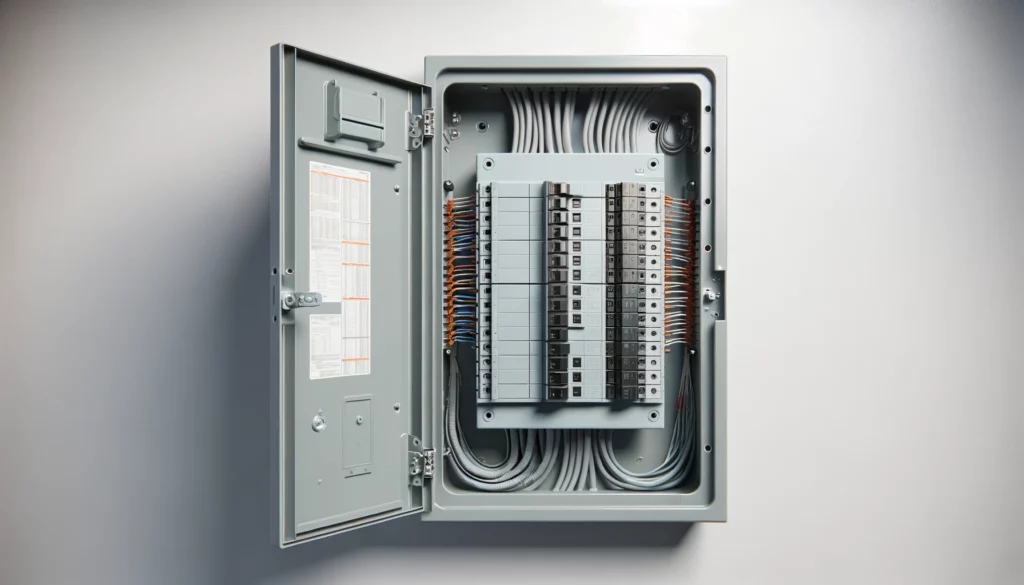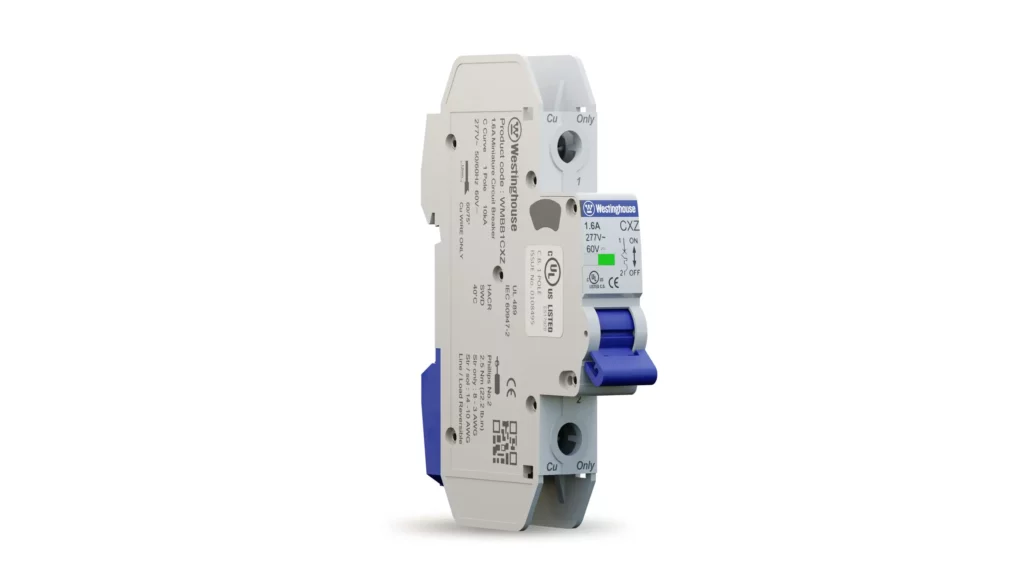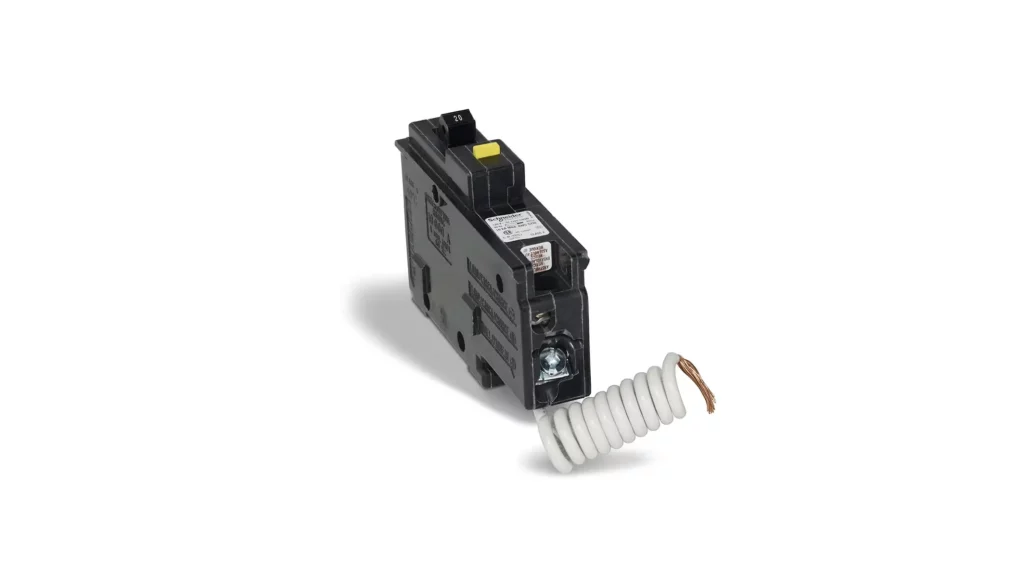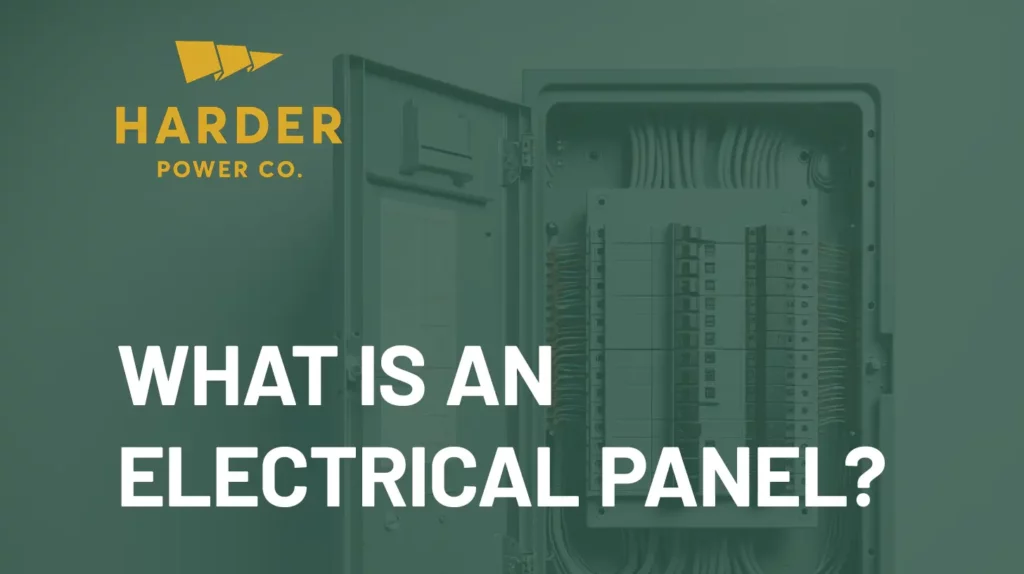Every day, we flick switches and our Abbotsford homes light up but we never really consider the complex network behind our walls. The heart of a home’s electrical system lies within an unassuming metal box: the circuit breaker panel. It’s the unsung hero that keeps our lives powered and protected, yet often goes unnoticed until trouble arises.
As we fill our homes with technology and appliances, it’s critical to understand the system that guards against electrical overload. A circuit breaker is really the guardian of the house, protecting it from rogue electrical current. Its role is integral to preventing damage and maintaining safety within our homes and buildings.
Lets spend some time learning all about circuit breakers! From the intricacies of different types of breakers to their functionality and common issues, you are about to discover the intricacies of the device that is central to both the distribution and safety of your home’s electrical power.
What is a circuit breaker?
At its core, a circuit breaker functions as a gatekeeper for the electrical current flowing through an electrical panel. They can consist of one to three poles, which allows them to protect a single circuit or multiple circuits simultaneously. Circuit breakers are particularly crucial in household electrical systems where the demand on power can be unpredictable and varying. Once the breaker detects that the current exceeds safe levels, it interrupts the flow, safeguarding against electrical fires, damage to appliances, and personal injury. The beauty of a circuit breaker lies in its simplicity; after it trips, one can easily reset it to resume normal operation. It’s this quick and easy reset function that contrasts sharply with old-fashioned fuses, which would have to be replaced after a single use.

Understanding the Electrical Panel
An electrical panel, often known as a circuit breaker panel or breaker box, is the central hub of a home’s electrical system. This metal box, typically installed in an inconspicuous area, houses an array of breaker switches that manage the distribution of electricity. The principal aim of an electrical panel is to allocate electrical current safely to different zones and items within a home, such as outlets, lighting, and appliances. At the heart of the panel lies the main circuit breaker, which has the vital job of controlling the overarching power supply to the entire household. Breaker switches within the panel possess the ability to be manually turned on or off, granting homeowners the power to control various sections of their electrical system.

Components of an Electrical Panel
Central to the electrical panel is the main circuit breaker that monitors and regulates electric flow to the whole house. Additional individual circuit breakers within the panel are in place to manage power to independent rooms or specific high-demand appliances. These switches are usually organized systematically, numbered, and labeled accordingly, providing clear guidance on which areas of the home they correspond to, simplifying troubleshooting and maintenance tasks. Inside the electrical panel, homeowners will find single-pole breakers, commonly used for standard lighting fixtures and outlets. For more substantial electrical demands, like major appliances or HVAC systems, double-pole breakers are employed.
Types of Circuit Breakers
Within any electrical circuit breaker panel, Abbotsford homeowners will encounter various types of circuit breakers designed to handle different electrical loads and offer varying levels of protection. The three mainstream types of breakers are standard (which includes single-pole and double-pole), Ground Fault Circuit Interrupter (GFCI), and Arc Fault Circuit Interrupter (AFCI). Each kind has its specific applications, amp capacities, and is strategically located to optimize safety and efficiency within the home. Models, such as the dual-function CAFCI/GFCI breakers, provide a multifaceted layer of protection, ensuring the interruption of electrical current when faults are detected, either from a ground fault or an arc fault.
Different Types of Circuit Breakers
The diversity of circuit breakers caters to various aspects of home safety and functionality.
- Standard breakers: Primarily focus on monitoring and regulating amp capacity to avoid potential overheating and associated risks such as electrical fires.
- Single-pole circuit breakers: Serve the most basic needs by delivering 120 volts, suitable for everyday receptacles and lighting.
- Double-pole breakers: Address the demand for higher power levels needed by larger appliances and generally come in higher amperage ratings.
- GFCI and AFCI breakers: Cater to the specific requirements of preventing ground faults and arc faults, respectively, representing an advanced step in electrical safety that detects and interrupts hazardous current flows.
- Dual-function CAFCI/GFCI circuit breakers: Offer comprehensive coverage by combining the characteristics of both breaker types in a single device.
Single-Pole Breakers
A single-pole breaker is a staple in residential electrical panels, often seen as individual switches rated at 15 or 20 amps, which accommodate the majority of home circuits operating at 120 volts. These breakers, taking up one slot within the electrical panel, are designed to offer a reliable power supply to low-amperage items and safeguard one energized wire.
Double-Pole Breakers
Double-pole breakers are more robust in their construction and capability. Occupying two adjacent slots in an electrical panel, these breakers interface with two energized wires and manage a higher voltage supply—either 120/240 volts or 240 volts alone—making them necessary for running heavy-duty appliances like air conditioners, electric dryers, and water heaters.
GFCI Breakers
GFCI breakers have a specialized role in preventing electric shock by quickly breaking the circuit when a ground fault—a potentially dangerous leak of electrical current—is detected. Equipped with Test and Reset buttons and often an LED status indicator, these breakers are particularly critical in damp environments such as bathrooms and outdoor areas.

AFCI Breakers
AFCI breakers are relatively newer and are designed with the intention of preventing electrical fires by identifying and interrupting unintended electrical arcs. They are mandatory in many modern homes and are essential for living spaces including bedrooms, kitchens, and other areas where arcs may occur due to damaged or deteriorating wiring. AFCI breakers are distinct, prominently labeled, and, unlike GFCI breakers, do not usually include a Test button.
How Circuit Breakers Work
Circuit breakers serve as essential safeguards, functioning as automatic electrical switches designed to protect an electrical circuit from damage caused by excess current from an overload or a short circuit. Their basic function is to interrupt current flow after a fault is detected.
Within the electrical panel, circuit breakers are essential in managing current fluctuations. They monitor the amperage usage in the circuits they control and will “trip,” or switch off, to prevent potential dangers such as electrical fires, appliance damage, and electric shocks. This tripping mechanism is what makes circuit breakers a vital component of residential and commercial electrical safety.
The Flow of Electricity and Overload Protection
The breaker box, or circuit breaker panel, is the central hub for controlling the flow of electricity from the main power source into different areas and appliances within a building. This ensures that each circuit is protected from overload conditions. When too much electrical power attempts to pass through a circuit, the breaker designated to that circuit will trip, which means it automatically switches off. This action shuts down the flow of power, safeguarding the electrical system from damage that could result from overloaded conditions.
Faults and Short Circuits
Short circuits and faults present serious risks to electrical systems. A ground fault happens when a hot wire comes into contact with a ground wire or a grounded portion of the junction box. The resulting current leak causes the circuit breaker to trip, preventing the flow of power to that circuit. Identifying the source of a faulty circuit could involve unplugging devices to see if the breaker will reset properly.
On the other hand, a short circuit is a more severe fault where a hot wire and a neutral wire come into direct contact. This can occur due to faulty or damaged wiring, resulting in a significant surge of electric current that can cause a breaker to trip or, in the absence of a functioning breaker, potentially lead to fires. Crossed or incorrectly installed wires must be diagnosed and repaired by a qualified electrician to prevent recurring short circuits.
Common Issues with Circuit Breaker Panels
Circuit breaker panels are vital components in any electrical system, governing the safe distribution of electrical current throughout a property. However, they can encounter several issues that may compromise their functionality and safety. These include overloaded circuits, which arise when too many devices are plugged into a single circuit, exceeding the circuit’s electrical capacity. Electrical faults, such as loose connections or damaged wiring within the panels, can pose fire hazards and shock risks. Over time, circuit breakers can wear out or become faulty, which can lead to malfunctions and even electrical fires if not addressed. Upgrades to the panel may become necessary to keep up with the growing electrical demands of modern appliances and technology while ensuring overall system safety.
Overloaded Circuits
Overloaded circuits are among the most frequent issues affecting circuit breaker panels. As electrical demands grow, residents may find themselves using more appliances simultaneously than a circuit can safely handle. This leads to increased current flow through the circuit, surpassing its rating, and causing the breaker to trip as a precautionary measure. Indicative signs of an overloaded circuit are frequent trips or the need to reset specific breakers regularly. Addressing this may involve redistributing electrical devices across different circuits of electrical wiring or even upgrading the circuit breaker box.
Electrical Faults and Hazards
Electrical faults, such as short circuits or ground faults, can trigger the tripping of circuit breakers. These issues often stem from inadequate wiring, poor connections, or outdated electrical components. Basic safety measures like turning off the main power when conducting panel maintenance are critical to avoid accidents. Equipping the panel with GFCI and AFCI breakers where needed enhances protection against ground faults and hazardous arcs, which can lead to fires. To ensure safety and to prevent potential damage, it is generally recommended to hire a qualified professional electrician for any electrical work involving the panel, as they are equipped to manage these risks and can make sure the power is completely disconnected during maintenance.
Aging and Faulty Circuit Breakers
Aging circuit breakers and electrical panels with outdated components can pose significant safety risks. Panels manufactured decades ago or those with a history of reliability issues, such as specific Federal Pacific models, should be inspected and often replaced to prevent fire hazards. Visible black spots or a burning smell near the panel are telltale signs of wiring problems or potential short circuits. Breakers that trip frequently signal that there are underlying issues within the electrical system that may require a replacement of the affected breaker or a more comprehensive upgrade to the panel, ensuring that it can handle the necessary amperage for today’s electrical demands.
Upgrading the Circuit Breaker Panel
An upgrade to the circuit breaker panel can offer a host of advantages. Modern panels provide improved safety features designed to prevent electrical fires and shocks. They afford greater ease of maintenance, as tripped breakers can simply be reset rather than replacing fuses, as in older fuse box systems. The cost of an electrical panel upgrade can vary but generally falls within a couple of thousand dollars, depending on the desired amperage and complexity of installation. Signs indicating the need for an upgrade can range from frequent breaker trips, visible wire damage, or the introduction of new high-powered appliances that necessitate a stronger electrical infrastructure. Upgrades help safeguard against the perils of an outdated system and ensure that the home maintains a safe and efficient flow of electrical power.
Importance of Hiring a Qualified Electrician
When upgrading or repairing a home’s electrical infrastructure, the Importance of Hiring a Qualified Electrician cannot be overstated. Only a licensed professional can ensure that your home’s electrical circuitry is handled with precision and care, promoting safety and efficiency. Knowledgeable about local electrical codes and regulations, electricians ensure all work is up to legal standards. They can identify and remedy issues such as frequently tripping breakers or unusual odors near the panel, averting potential hazards. Their specialized expertise is also crucial for executing electrical panel upgrades, replacements, and repairs, guaranteeing the job is done correctly the first time.
The Role of a Licensed Electrician
The Role of a Licensed Electrician is integral to ensuring that electrical systems function safely and comply with regulatory standards. In Canada, this is especially important as electrical installations must meet the strict safety norms laid out by the Canadian Electrical Code (CEC). Whether assessing when an electrical panel requires an upgrade or troubleshooting a recurring fault, licensed electricians have the capability to address all concerns efficiently. They can prevent potential risks such as electrical shocks or property damage that can arise from unprofessional handling of electrical systems. Moreover, with the right tools and knowledge, they can ensure that your electrical components are serviced, installed, or replaced safely and efficiently.
Adhering to Electrical Codes and Safety Regulations
Electrical installations and repairs must Adhere to Electrical Codes and Safety Regulations to ensure the safety and proper functioning of a home’s power systems. These regulations, outlined by the CEC and various building codes specific to one’s location in Canada, encompass requirements such as the proper placement and accessibility of breaker boxes and height restrictions for panels. Staying compliant not only promotes safety but also ensures that insurance and warranty requirements are met. Panels that do not meet the current safety standards, such as outdated Split-Bus Panels, must be replaced.
Benefits of Professional Electrical Services
Electrical work is intricate and potentially dangerous, which is why the Benefits of Professional Electrical Services cannot be understated. Certified electricians have the training to address electrical issues safely, with the proper tools and diagnostic techniques. They can verify that your breaker box is wholly depowered before beginning their work, greatly reducing the risk of accidents. If you’re faced with loose, weakened, or exposed wires, it is crucial to contact a professional to tackle these issues promptly.
Circuit Breaker Panel Maintenance and Safety
When it comes to maintaining and ensuring the safety of your home’s circuit breaker panel, there are several key precautions that you should consistently adhere to. Firstly, always shut off the individual circuit breaker connected to the circuit you are working on. Better yet, for maximum safety, power down the main breaker, which cuts off electrical current to the entire house, to prevent electrocution and other electrical hazards. Prior to any installation or operation, thoroughly read and follow the manufacturer’s instructions for your breaker to ensure it is installed and functioning correctly.
Understanding your home’s circuit breaker panel is an important aspect of basic home maintenance and electrical safety. Knowledge of your panel empowers you to read and reset breakers confidently, allowing you to deal with minor issues without compromising your safety.
Regular Inspection and Testing
Ensuring the reliability of your home’s electrical system involves regular inspection and testing of your circuit breaker panel. Monthly testing of AFCI (Arc Fault Circuit Interrupter) and GFCI (Ground Fault Circuit Interrupter) breakers is crucial to confirm they are in proper working order, preventing the risk of electrical fires and shocks.
When adding new electrical work to your home, it is vital to have it inspected by a licensed electrician or a city/county inspector. This ensures that the new additions meet all necessary code requirements and will function safely within your current electrical system.
About Harder Power Company
For residents of the Fraser Valley, Harder Power Company is more than just a service provider. It’s a friendly neighbor you might spot around town in their distinctive green vans. They’re always ready for a chat or to discuss how they can meet your electrical needs, emphasizing a strong community connection.
Reach Harder Power at (604) 832-9215 or send a message to their contact us page today.


